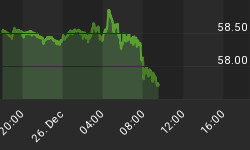The following was published for our subscribers April 28, 2008
The Treasury market remained under pressure last week. Surprisingly the short term yields continue lead the way higher. Even as the fundamental story continues to deteriorate, there is a rotation happening from what went up during the past 6-9 months into what was falling in price. Government bonds, commodities and foreign currencies have been trading down during the past week or two, while the US Dollar, selected financials, tech stocks have been recovering a small fraction of their previous losses. The market is trading on the assumption that the worst is over, and the Central Banks saved the world financial system from ruin and all is back to normal, so it should be safe to strap on some riskier assets. On the other hand, the Bank of Canada lowered their benchmark rate another 50 basis points last week to 3% and indicated that they are concerned about ongoing economic weakness in North America. Consequently their bias is toward further easing. The Fed will announce their next move - most likely another 25 basis point cut to 2% - next Wednesday. The experts are now happy with the Fed's actions as the belly-aching about the Fed being "behind the curve" (i.e. not lowering rates fast enough) subsides for now. The plan at the moment is to park the Fed Funds rate at 2% for a few months and let the lower rates help the financial system and the economy recover. The problem that the economy is faced with is not the price of credit; it is the availability of credit. While the Central Banks have done a superb job of providing credit for the financial community, Joe Consumer - approximately 72% of the US economy - does not have the same access to easy and cheap credit, so he has no choice but to tighten the belt buckle. Once it becomes evident that this process will go further and deeper than expected, Helicopter Ben and his buddies will be back with further rate cuts before long.
NOTEWORTHY: The economic data calendar was sparse last week. Housing can't even bounce for one month in a row. Existing Home Sales fell 2% to 4.93 units in March. Meanwhile New Home Sales plunged another 8.5% to 526k. Let's see: Housing Starts in March were at 950k, Sales at 526k. Can anybody spell supply-demand imbalance, please? No wonder house price declines have gained momentum. Durable Goods Orders "only" decreased 0.3%, so no reason to panic on that front yet. Weekly Jobless Claims decreased 33k to 342k last week. Consumer sentiment is at its lowest since the early 80s. Next week's headliners will include the Conference Board Consumer Sentiment Survey, the preliminary Q1 GDP, the Purchasing Manager's Survey as well as the monthly employment report.
INFLUENCES: Trader surveys remained optimistic on bonds during the past week. The present levels are creating a slight headwind from a contrarian perspective. The Commitment of Traders reports have indicated that the commercials have a long bias in their positioning. Last week's data indicate that Commercial traders were net long 350k 10 year Treasury Note futures equivalents, which is supportive for the bond. Seasonals remain negative until the end of the month. The 10 year yield moved higher - to 3.87, but there will be no serious technical damage done unless the 3.9 to 4% area is breached. I expect that level to hold for now.
RATES: The US Long Bond future traded down another point to close at 115-19, while the yield on the US 10-year note increased 16 basis points to 3.87%. The yield curve was flatter, but I am expecting that the curve will soon resume steepening. Long-short accounts can take advantage of the steepening trend by buying 2 year Treasuries against selling 10 year Treasuries on a risk weighted basis using cash or futures. This spread moved down 8 bps to 146 during the past week. It looks like the curve steepener has run into solid resistance at the 200 level. This may take months to overcome. In the mean time the range is expected to be 150 to 200.
CORPORATES: Corporate bond spreads remain under pressure. 10 year bank sub-debt moved out another 25 basis points to 305 basis point premium to the government benchmark, its widest level again. I recommended shorting the bank sub-debt issue at Canada bonds +58 basis points a while back. Certain segments of the credit markets represent good value now. However, with margin clerks very much in charge of the market, more near term pain is expected. A couple of weeks ago I recommended that accounts review their short exposure and fine tune it somewhat. Out of 2 previous short recommendations, I suggested to cover the Trans Canada Pipeline position and remain short the financial sector. The profit booked on the Trans Canada recommendation is 113 basis points, which is equivalent of a price gain of approximately 18% on a 30 year bond. I would like to make it very clear that this recommendation is only a step to reduce a short exposure to the sector. It is by no means a sign that I have turned positive on corporate spreads. The intent to stay with the financial short exposure was also deliberate as I expect this sector to continue to suffer.
BOTTOM LINE: Bond yields moved sharply higher across the yield curve again last week. The fundamental backdrop remains bleak as the economic data continues to disappoint. Trader sentiment and seasonals are negative, while the COT positions are supportive. My recommendation is to add to the curve steepener, continue to shun the weaker corporate credits. Silly as it may sound, I liked the 2 year note yield at 2.25% and I like it even more at 2.41%.
















